Latest Blogs
Software Development
Ramsha Khan
Nov 26, 2025
Enterprise Application Development: A Complete Guide for Modern Enterprises for 2026
Read More...

Implementing DevOps Vulnerability Scanning in a CI/CD P...
Think of your software development process like a manufacturing line. Each step, from writing code to testing, packaging, and releasing, is part of a carefully designed system. If at least one batch of raw materials becomes defective during that process, then its final product reaches the consumer; it has incurred enormous costs of recall, repairs, and damage to reputation.
Similarly, if defects in the source code or third-party components occur after deployment, the fallout they cause on security, compliance, and customer trust can be grave. This serves to explain why it is essential to detect issues early in the CI/CD pipeline; basically, it does like automated quality checks at every stage of the production line.
Today, we are going to delve into understanding what DevOps vulnerability scanning in CI/CD is, the reason or importance of having it, its operation, the different types of scans available in the DevOps world, plus the advantage that it offers.
The DevOps lifecycle is usually described as:
Plan → Code → Build → Test → Release → Deploy → Operate → Monitor → Improve.

Security should weave through each stage, ensuring safe delivery at every step.
The question is what DevOps is and its vulnerability scanning CI/CD.
At its core, DevOps vulnerability scanning CI/CD means building security into the same system that developers already use to test and deliver software.
By adding vulnerability scanning into this process, you’re making sure every aspect is safe before the software reaches the customer.
Here’s why security checks can’t be skipped in today’s fast-moving world:
Research shows that 96% of codebases contain open-source software. That means even if your team writes great code, vulnerabilities can sneak in through third-party components.
DevOps encourages frequent releases. Without automated scanning, issues could reach customers much faster than before.
It’s easier and less costly to correct a mistake during development than after it goes live.
Many industries require proof of ongoing security checks to meet standards like PCI DSS or HIPAA.
Studies show the average time to fix high-risk vulnerabilities is about 74 days, that’s over two months of exposure if you don’t have automation helping you.
Let’s keep this simple.
When a developer submits new code, the pipeline automatically starts running tests. Alongside the usual “Does the app work?” checks, security scans run in the background:
If something looks dangerous, like a known weakness in a library, the system flags it. Developers get feedback right away, not weeks later. If it’s a serious problem, the system can stop the release before it reaches customers.
It’s like having a food inspector stationed at every checkpoint in a bakery.
There’s no single scan that covers everything. Different scans look at different features:
Together, these give a full picture of where risks might appear.
So, why invest in this? Here are the real-world benefits teams notice:
Not every tool is created equal. When choosing CI/CD Security Tools, look for:
Even with the best tools, it’s not just about finding problems, it’s about managing them:
This approach is what people mean when they say Vulnerability Management and DevSecOps with CI/CD. It’s about blending security into the daily rhythm of development, not treating it as an afterthought.
To understand how this works in practice, let’s imagine a mobile banking app.

A developer introduces a new feature, such as fingerprint login, to improve user convenience.
As soon as the code is submitted, the CI/CD pipeline automatically runs its usual checks to make sure everything works as expected.
During these checks, a security scan detects that one of the open-source libraries being used has a known vulnerability.
Instead of letting the risky code move forward, the pipeline stops the update until the library is either updated or replaced with a safe version.
Because the problem is caught right away, the issue is resolved before the app is pushed out to thousands of customers.
This simple example shows how early scanning saves embarrassment, prevents financial losses, and protects the trust of users.
Even with the best intentions, teams sometimes make mistakes when adding vulnerability scanning to their CI/CD pipeline. Here are the most common ones:
Teams often add multiple tools right away, which creates confusion and slows progress. It’s better to start small and gradually scale up, whether you’re a small startup using business intelligence tools or a large enterprise experimenting with new tools.
If every small issue blocks progress, developers get frustrated. A good approach is to begin with warnings and only enforce strict rules once the team is comfortable.
Many teams focus only on the app’s code and forget about cloud or infrastructure settings. These are often the weakest points, so scanning them is just as important.
Sometimes vulnerabilities are logged but never assigned to a person. This means they sit unresolved. To avoid this, make sure each issue has a clear owner.
Implementing DevOps vulnerability scanning in a CI/CD pipeline isn’t about slowing things down; it’s about speeding them up safely. By adding lightweight, automated checks into the development process, DevOps development teams like those at Arpatech can ship with confidence, protect users, and avoid costly surprises.
The key takeaway: Treat security like quality as it’s the trend of DevOps as a service, so we need to build security into the recipe, not the cleanup.
CI/CD stands for Continuous Integration and Continuous Delivery or Deployment.
That is how CI/CD forms the assembly line for modern-day software development.
In a broad sense:
The goal is a high automation quotient, whereby the pipeline can manage such repetitive check-ups and human effort can be focused on solving real problems.
Ramsha Khan
Aug 26, 2025
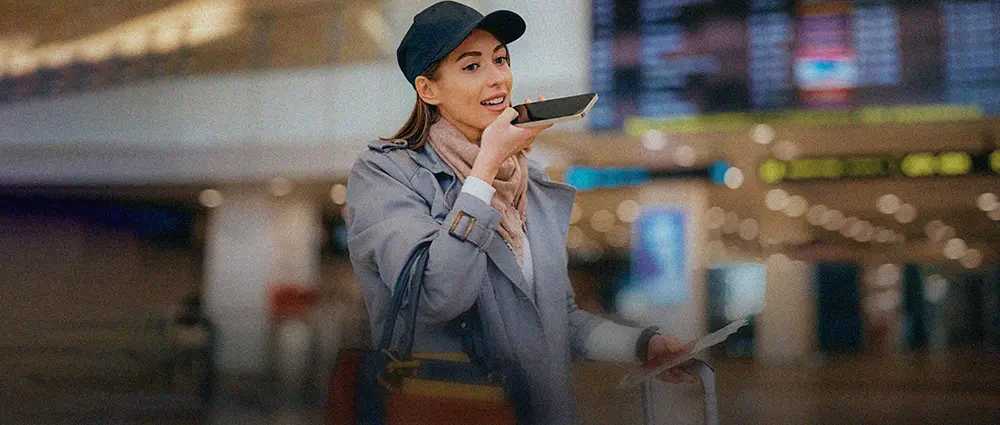
How AI Is Making Mobile Apps Smarter with Image & ...
Last weekend, Aisha was rushing to catch her flight. With one hand holding her coffee and the other dragging a suitcase, she simply said, “Hey travel app, check me in for my flight.”
Her travel app recognized her voice instantly, confirmed her booking, and brought up a QR boarding pass on screen.
A few minutes later, at the airport’s shop, she pointed her phone camera at a pair of sunglasses. The app scanned them and instantly suggested cheaper options online, same model, same color, but at half the price.
Neither moment felt extraordinary to her. But just a few years ago, AI-Enabled Image and Voice Recognition Features in Apps like these would have sounded futuristic. Today, they’re so seamless that many users barely notice the complex AI image recognition in apps and speech technologies working in the background.
Top apps today combine computer vision, automatic speech recognition (ASR), and natural language understanding (NLU) to create interactions that feel fast, personal, and (dare we say) a little magical.
Here, we’ll understand the evolution of AI in mobile applications, unpack AI image and voice recognition: core components and technologies, and explore advanced image recognition capabilities and use cases.
Insider Intelligenc found that over a quarter about 26% of U.S. adults currently use or plan to use AI-powered voice assistants on their smartphones, making voice the most popular AI feature on mobile right now.
Mobile AI has gone through three big waves:
Apps captured audio or images and shipped them to the cloud for processing. This enabled early breakthroughs, like accurate voice transcription and object tagging, but it introduced latency and raised privacy questions.
Models got smaller and phones got faster. AI mobile App Developers began running lightweight models on-device for instant responses e.g., wake word detection, face unlock, offline translation, and falling back to the cloud for heavier tasks. This cut network costs and made features more resilient.
With NPUs integrated into mainstream chips, phones increasingly run image and voice models locally for summarization, translation, scene understanding, and multimodal search. The promise: snappier UX, stronger privacy, and smarter features that work even with a spotty signal. Analysts expect this trend to accelerate as phones ship with silicon specifically optimized for AI workloads.
Both modalities rely on a similar foundation, representation learning, but the details differ:
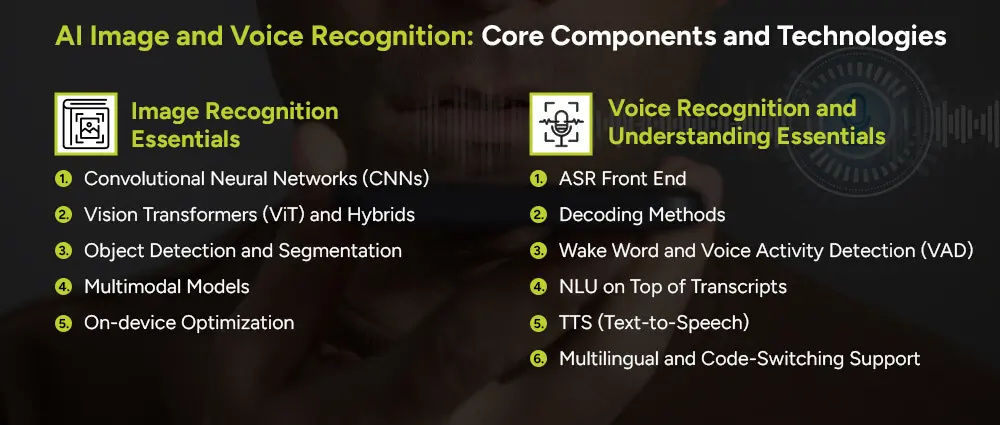
The main technology for identifying images and extracting features. Examples include ResNet and EfficientNet.
Transformers break images into patches and use attention to find patterns. They often match or beat CNNs on large datasets and are easier to scale.
Models like YOLO and DETR can detect objects and draw boxes around them. Mask R-CNN and SAM go further, identifying the exact pixels for each object.
Systems like CLIP connect images and text in the same space. This enables features like visual search, like asking “find shoes like this,” and smart captions.
Techniques like quantization, pruning, and distillation make AI models smaller and faster so they can run smoothly on mobile devices.
Automatic Speech Recognition (ASR) converts audio into text. Modern systems use Conformer models for more accurate results, replacing older approaches.
CTC, Transducer, and Attention decoders help align audio with text efficiently and accurately.
Small models listen for trigger phrases like “Hey Siri” and detect when you start speaking. These usually run on-device for speed and privacy.
Natural Language Understanding (NLU) takes the text, figures out the intent, and pulls out key details to complete actions.
Turns text back into natural-sounding voices, making assistants conversational.
Essential in places where users mix languages in one sentence. Modern models handle this much better than older systems, which is why app modernization is highly essential for SMBs and large-scale businesses today.
You don’t need to build a full Siri. Start with small wins and scale.
1) Define your voice moments
Figure out where speaking is better than tapping. Examples include:
2) Decide where AI runs
3) Build the pipeline
4) UX considerations
5) Privacy and trust
Voice is already popular on mobile. In fact, 26% of U.S. adults use or plan to use AI-powered voice assistants on their smartphones (YouGov/Insider Intelligence). Designed well, voice can become the most natural and convenient way for users to interact with your app. (EMARKETER)
Image recognition has moved far beyond “is this a cat?” Here’s where teams are gaining traction:
Shoppers snap a picture and find similar items; travelers point their camera to identify landmarks. Multimodal embeddings (think CLIP-like) power “find me something like this” experiences that boost conversion and retention.
Face and hand tracking enable makeup try-ons, eyewear fitting, ring sizing, and clothes try-on in the retail and ecommerce business. Scene geometry estimation and segmentation let users preview furniture at scale in their living room.
Healthcare professionals pose estimation tracks form during workouts; dermatology apps flag lesions to discuss with a clinician; diet apps recognize packaged foods and nutrition labels.
From a market standpoint, computer vision is one of AI’s fastest-moving domains. Analysts track rapid growth as industries adopt vision for automation and edge use cases.
Recognition is just the beginning. The real value comes when your app adapts to users in the moment. Context-aware UIs can detect a document and switch to “Scan” mode, or change language settings if the user speaks in Urdu. Apps can remember frequent actions and suggest them, summarize bursts of photos or voice notes, and connect user-captured images to relevant catalog items. The key is to personalize in a helpful, transparent way while giving users control.
Architecture choices: where AI runs
A mix of on-device and cloud processing. For example, detect wake words locally, then send complex or uncertain requests to the cloud. Sensitive tasks can be checked in both places.
With more GenAI-capable smartphones and better NPUs, more AI features can run locally each year, improving speed, privacy, and user trust.

Soon, you’ll be able to select a photo album and ask your phone to create a story with highlights, all without using the cloud. With more powerful NPUs, this will be possible for everyday users.
App frameworks will adapt to your needs while keeping your data on your device, thanks to technologies like federated learning and differential privacy.
On-device speech-to-speech translation with voice cloning (with consent) will make conversations in different languages smooth and natural.
From phone cameras to wearables, apps will understand what you see and do, enabling training, repair, and accessibility tools.
App stores and device makers will offer pre-built AI model bundles, making it easier for developers to add vision, voice, and other capabilities.
AIaaS tasks will be scheduled smartly to save battery, running heavy processing when plugged in and scaling back when needed.
Built-in tools for consent, audit logs, and data handling will help developers meet privacy and compliance standards. Therefore, whether you’re in the fintech, banking, or healthcare sector, you’ll always be goodwith compliance on all ends.
AI works by learning patterns from data and applying that knowledge to new situations.
For images, AI models are trained on millions of pictures to recognize things like edges, textures, shapes, and overall context. Modern systems like Convolutional Neural Networks (CNNs) and Vision Transformers turn raw pixels into meaningful information. This allows apps to classify what an image contains, detect specific elements, separate regions of interest, and even find similar items.
For speech, AI listens to sound patterns over time and learns how they map to words, even with background noise or different accents. Advanced models such as Conformer/Transducer can recognize speech in real time, while natural language understanding (NLU) models interpret the meaning and extract details like amounts or names.
With more data and faster hardware, today’s smartphones can perform this recognition almost instantly. On-device AI is becoming standard, making the process faster, more accurate, and more private
The key to building AI-powered mobile experiences is to start small but smart. Focus on one high-value user journey, such as scanning receipts and extracting totals or enabling voice-controlled playback. Prototype using ready-made AI models or APIs and test on your target devices to ensure speed and accuracy. Decide what runs on-device and what runs in the cloud, then optimize with techniques like caching.
Build a smooth fallback for when AI is not perfect, then launch to a small group, gather feedback, and make improvements. Over time, expand with features like multilingual support, personalization, and multimodal search. Continuously test in different lighting, noise, and accent conditions while keeping privacy as a top priority.
When done well, users will feel like your app just works, delivering a fast, helpful, and secure experience. At Arpatech, we specialize in integrating AI seamlessly into mobile apps. Let us help you bring your next smart app idea to life.
AI enhances visuals by improving capture quality (clearer low-light and motion shots), automating tasks (detecting documents, fixing perspective, running OCR), personalizing content (curated galleries, smart edits), and boosting accessibility (scene descriptions, object recognition). It also makes AR more realistic with accurate depth and segmentation.
Image: Convolutional Neural Networks (CNNs) and Vision Transformers (ViTs) for classification, detection, and segmentation.
Speech: Conformer-Transducer for streaming recognition, paired with transformer-based models for understanding context.
Ramsha Khan
Aug 19, 2025
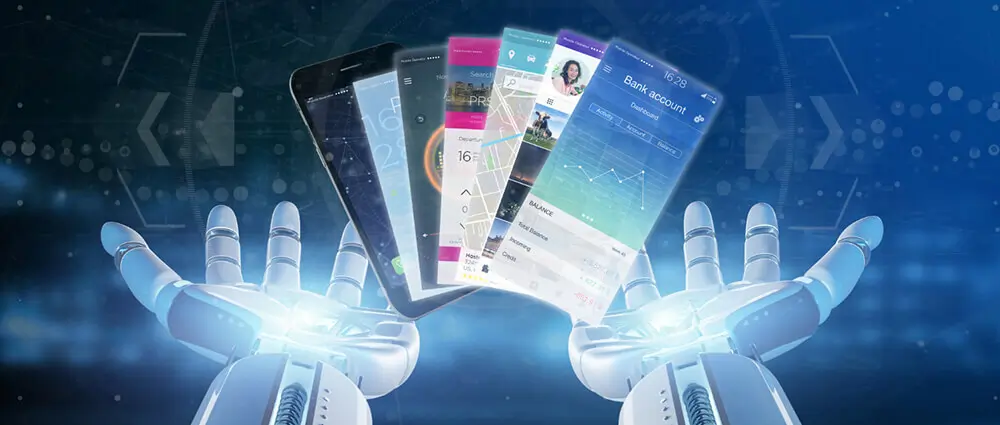
How to Integrate AI into Your Mobile App
2025 is the year of Artificial Intelligence; not only are we past the chatbot era, but we are now seeing AI control all sectors of life. Behind the scenes, it’s powering all the apps you use every day, from music apps like Spotify recommending your next favorite song to Google Maps predicting the fastest route, or your favorite shopping app suggesting exactly what you need before you even search for it.
This is AI in action.
Now back to the business or startup weighing the pros and cons of AI for mobile app development. You sure are not on your own. Many companies these days are asking, How might we use AI to distinguish ourselves, delight our users, and generate real value?
Today, we will look at everything about AI for mobile apps, from the theory and feature ideas, examples from real life, to the best practices.
Let us get to it so we can start applying AI to your next mobile app.
Before looking into the how, let’s first start with the what.
So, the question should be:
What is AI integration for SaaS applications and mobile apps?… and it’s benefits:
AI integration is embedding AI abilities-such as machine learning, natural language processing, image recognition, or predictive analytics-into your application so it can carry out activities requiring human intelligence.
The benefits, especially in SaaS and mobile applications, are huge.
That is why companies should use AI integration in software application development; this is becoming the standard and not an exception.
If you’re wondering whether or not you really need AI in your app, the answer depends on your goals. But here’s the truth: AI isn’t just for tech giants anymore. It’s accessible, affordable, and in many cases, essential for staying competitive.
Here’s why businesses choose to integrate AI in mobile app development:
In fact, one of the strongest benefits of AI in mobile app development is its ability to unlock hyper-personalization and predictive features that directly increase user retention.
So, what exactly can AI do for your mobile app? Let’s explore some AI use cases for apps across industries:
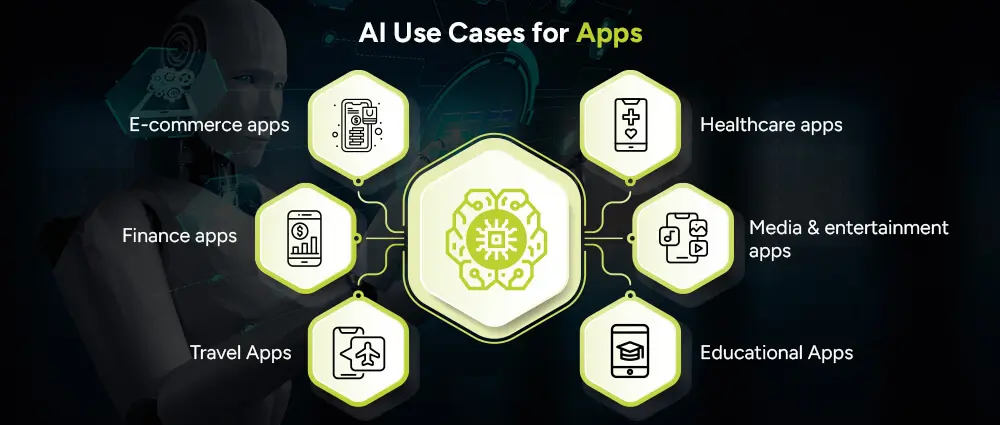
Personalized product recommendations, smart search, visual shopping (you only need to upload a photo and find similar products). These AI apps for e-commerce and businesses are transforming shopping experiences from one-size-fits-all to deeply tailored.
Symptom checkers, predictive health alerts, patient chatbots. This trend is shaping the future of healthcare mobile app development worldwide.
Fraud detection, spending insights, and robo-advisors are common features powered by AI. This ties closely with what is FinTech app development, which increasingly relies on AI for smarter, safer, and more efficient digital finance.
Personalization of playlists, AI content moderation, and smart editing abilities are the tools used to shape user experiences in media and entertainment. From recommendation engines at Netflix to For-you pages on TikTok, AI has been at the core of almost all entertainment apps today.
Modern AI Apps allow travel apps to predict user needs, thus providing highly personalized journeys and trouble-free experiences. Dynamic pricing engines, predictive route planning, and voice-enabled booking assistants stand in good stead to save the traveler time and money.
Personalized education is a term in which Intelligent Tutoring Systems, Automated Grading, and Adaptive Learning Routes take learners closer to distant learning. It modifies education according to students’ strengths and weaknesses such that there is an individualized learning path, one that really fits with every individual.
The AI in this case is the app’s brain from where it gradually learns from users and adapts itself to make more intelligent experiences.
Now let’s get practical. Here’s a step-by-step guide on how to integrate AI into your mobile app.

Instead of just thinking about adding AI to your app and business, start with What problem do I want AI to solve?
For example, if you’re building a shopping app, your goal might be Use AI to recommend the right product to the right customer.
This clarity will guide every decision.
There are two main approaches:
Plenty of these ready-to-use services available from different providers such as Google ML Kit, IBM Watson, and Microsoft Azure are quicker, cheaper, and suitable for common tasks such as chatbots, voice recognition, or image tagging. That’s what is known as AIaaS or Artificial Intelligence as a Service, in which businesses tap into cloud-based AI and do not have to reinvent the wheel every single time.
Building your own AI from scratch or training a model on your own data. This is time- and resource-consuming, but gives you total control and differentiation.
Choosing between the two is dictated by considerations of budget, purpose, and timeline.
AI is only as smart as the data it learns from. You need to collect high-quality, relevant data (e.g., purchase history, user activity, images), Clean and organize it so the AI can learn patterns without noise.
For example, Netflix’s recommendation engine works because it analyzes millions of viewing habits to predict what you’ll watch next.
For implementing AI in the next mobile application, the right tools are necessary. Some of the popular frameworks are:
You’ll also want to consider using a cross-platform app framework if you plan to build for both iOS and Android while keeping development costs efficient.
If you’re creating a custom AI model, you are required to:
This ensures your app’s AI doesn’t just work in theory but actually delivers results.
Now, it’s time to merge the AI with your app.
AI isn’t a one-and-done feature. Here are some ways you need to test the Artificial Intelligence in your software:
Just remember, AI improves with iterations. More improvements mean better AI apps.
Once live, monitor AI performance continuously.
AI is dynamic, it learns and adapts, but only if you monitor it closely.
Let’s bring this to life with some examples of AI integration in apps:
Customized shopping experience made possible through artificial intelligence. Amazon uses machine learning algorithms to recommend products based on browsing history, purchasing behavior, and even what is trending among similar demographics. With visual search options such as those provided by ASOS, users can upload an image and immediately locate matching products.
AI forms the core of banking and financial apps, ensuring transparency and customer service. PayPal and Revolut apply AI algorithms to detect fraudulent activity in real time.
Streaming platforms thrive on AI recommendations. For Netflix and Spotify, AI analyzes user behavior and preferences to create personalized playlists or film suggestions and even predicts the content a user will enjoy next.
These examples illuminate AI app integration that generates value across industries. Indeed, if you consider brands converging on retail and e-commerce using AI, you will see similar trends whereby AI directly shapes business outcomes.
These examples show how AI integration in apps creates value across industries. In fact, if you look at brands converging AI into retail and e-commerce, you’ll see similar trends where AI is directly shaping business outcomes.
Of course, integrating AI isn’t always smooth sailing. Some of the major challenges in integrating AI into apps include:
The good news is that these challenges can be overcome with the right foresight, partners, and best practices.
The increasing popularity of mobile application development services has now landed in the fact that businesses are investing in AI-first designs. There is much realization amongst businesses, especially small- to mid-sized companies, about why SMBs need a mobile app that can learn, adapt, and change with the time.
And if you’re brainstorming mobile app ideas for 2025, consider building with AI at the core. Whether it’s retail, fintech, healthcare, or entertainment, AI-driven apps will dominate the landscape.
In the present day, AI is no longer considered an option but an essential part of mobile app development. Master the integration of AI into your mobile app, and that would take your app in giving smarter, faster, more personalized experiences for users.
The roadmap is clear: defining goals, selecting the right strategy, overcoming challenges, and following the best practices. The only question that remains is: “When would you start with integrating AI into your app?”
Have a consultation with mobile App developers at Arpatech, and let’s work together to integrate AI in your business application.
AI-based mobile apps operate algorithms and models that imitate human intelligence. These models process data such as image, voice, or user behavior; learn these patterns; and predict or decide outcome. AI can be exemplified in language learning apps that listen to the user’s pronunciation and give feedback instantaneously.
The assistance of AI is twofold:
Ramsha Khan
Aug 19, 2025

What Startups Should Know About Managed IT Costs and RO...
Every startup’s lifeline today runs through tech. Reliable systems, fast networks, secure data, they don’t just support operations, they enable growth. That’s why understanding managed IT services pricing means recognizing how IT helps you scale, stay agile, and stand out in competitive markets like the UAE or GCC.
Startups in the region are booming. For instance, in the UAE, venture capital investment jumped by 93% in 2021, hitting around USD 1.17 billion. To maximize that capital, it makes sense to channel resources toward smart, flexible IT, which brings us to managed IT services.
Managed IT services are when you outsource your IT operations, like help desk, network monitoring, updates, backups, and cybersecurity solutions, to a specialist provider aka an MSP. This gives you enterprise-level support without the overhead of in-house infrastructure.
But what lies behind the IT managed services pricing? Key factors include:
Regional competition and standards, in hubs like Dubai and Riyadh, providers must stay competitive, yet sustainable.
What are the factors that come into play when deciding upon the right IT support pricing? Let’s break it down:
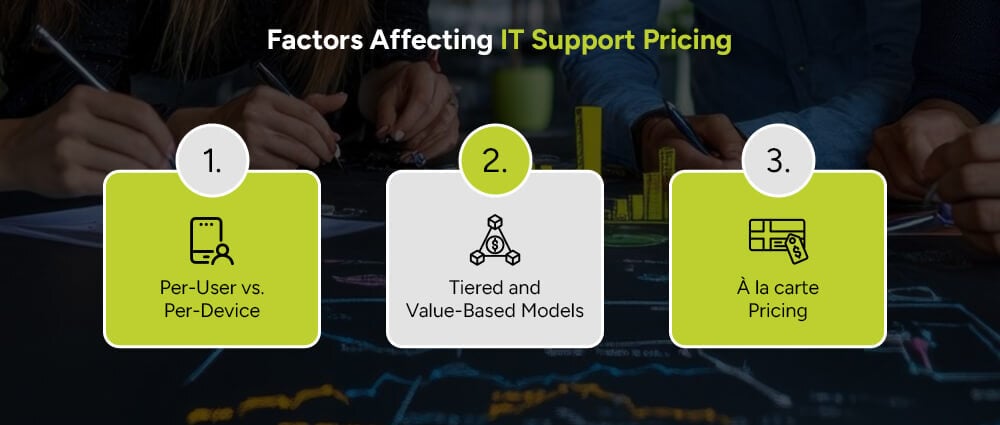
Per-user pricing charges a flat monthly rate per person covering all their devices; per-device pricing charges per workstation, server, phone, etc.
Some MSPs bundle multiple services into “basic,” “premium,” or all-you-can-want packages, simplifying selection and control.
Just pick and pay for what you need, which is useful if you want flexibility
To summarize the key influencers on pricing, Support, and Remote managed IT services:
One helpful tool often promoted is the managed IT services pricing calculator. For example, in Dubai, providers like Cloud Technologies offer an MSP cost calculator where you input user counts, device mix, SLA levels, and support hours to estimate your IT expenses. These tools help startups model budgets before committing.
With the MEA IT services outsourcing market expected to rise from ~USD 49 billion in 2024 to over USD 90 billion by 2030, growing at around 10.6% CAGR, you’re diving into a huge, dynamic ecosystem. Having budget clarity helps you stay strategic and proactive.
When startups think of Managed IT Services, cost savings are usually the first thing that comes to mind. But the real value goes far beyond just saving money; it’s about creating a smoother, smarter way to run your business.
Your in-house team can stop putting out IT fires and instead focus on what drives growth, product development, like following software trends and FMCG growth, marketing, and innovation. This means less distraction and more energy spent on bringing your vision to life.
Managed IT providers bring in specialists who understand security, compliance, and industry best practices, like retail or Healthcare IT support in Dubai. You don’t need to hire multiple experts; you get their skills on demand, ensuring your tech operations are not just functional, but optimized.
Instead of unpredictable repair bills or surprise upgrades, you pay a fixed or clearly defined monthly fee. This predictability in IT costs helps you budget smarter and avoid sudden financial strain, a major plus for startups managing limited capital.
In fast-moving startup environments, every minute of downtime is a missed opportunity. Managed IT ensures proactive monitoring, quick problem resolution, and scalable solutions, so your business stays nimble and available when your customers need you most.
While operational efficiency is a huge win, the return on investment (ROI) is where managed IT services really shine.

You avoid big capital expenditures on servers, software licenses, or full-time IT hires. This frees up funds for areas that drive immediate growth, like marketing campaigns or product upgrades.
Downtime not only halts operations but can damage your reputation. Managed IT helps prevent technical failures before they happen, limiting unexpected troubleshooting costs and protecting your revenue flow.
Whether you need to onboard 5 new employees or launch in a new market, your IT services can scale up or down instantly, without the hassle of renegotiating contracts or buying new hardware.
Startups that run efficiently, stay secure, and respond fast to market changes gain a clear competitive advantage. Reliability builds trust with customers and investors, making you stand out in a crowded space.
Market Insight: Globally, the managed services market is projected to reach US$ 25.67 billion by 2025, with the UAE alone expected to contribute nearly US$ 79.8 million. This growth shows just how much trust businesses are placing in outsourced IT to fuel both stability and innovation.
To estimate ROI, startups can use a Managed IT Services ROI calculator. Compare:
Unfortunately, these calculators aren’t widely published, but many MSPs provide packaged tools or cost-benefit templates in proposals.
Ask your MSP these questions:
For startups, every dirham, or dollar, counts. Prioritizing IT budget optimization does more than save money:
In the UAE and MENA:
So, your ROI won’t just be financial; it reflects your alignment with digital transformation and emerging norms.
Whether you’re in the Fintech field, retail or medical practice, managed IT support cost for a startup can vary widely, and it’s not a one-size-fits-all number. Your final investment will depend on several factors, including:
The more users, devices, and systems you have, the more support you’ll need. A small team with a few laptops is simpler to manage than a growing company with multiple offices, mobile devices, and specialized hardware. A larger or more complex IT setup naturally requires more resources.
Managed IT can range from basic help desk support to full-service solutions that cover cybersecurity, cloud migration, management, backups, and compliance. The wider your service scope, the more expertise and ongoing management your provider will deliver.
MSPs use different pricing approaches, per user, per device, or flat-rate. Some offer tiered packages, others fully customizable plans. The right model should match your budget, flexibility needs, and growth plans so you’re paying for what you truly need.
Ultimately, the “right” cost is the one that matches your operational needs, security requirements, and growth plans, while still delivering measurable value and ROI.
Managed IT services pricing, IT managed services pricing, and managed services IT pricing are more than numbers; they reflect how efficiently and securely your startup runs. Using tools like the managed IT services pricing calculator, understanding factors affecting IT support pricing, and calculating ROI via a Managed IT Services ROI Calculator can help you harness the importance of IT in startup success.
With operational advantages beyond cost savings and financial benefits clearly outlined, the strategic move for startups is to prioritize IT budget optimization. This ensures your venture grows on solid, scalable ground. With IT help desk support specialists at Arpatech, your startup can get the support you require to get ahead of early competition, so let’s have that early meeting.
The cost of a Managed Service Provider (MSP) depends on things like how many people or devices you need to support, how complex your IT setup is, and what services you want. Many MSPs charge per user or per device, and prices can change based on whether you choose basic support or a full package that covers things like cybersecurity, cloud managed services, and backups. Where your business is located can also affect the price.
Ramsha Khan
Aug 14, 2025

How to Choose the Right Managed IT Provider in the UAE
Picking a managed IT services partner is one of those business decisions that feels small until everything depends on it: networks, data, payroll, customer trust. If you’re reading this from the UAE, you’re in a market with rapid cloud and data-center growth, rising cyber threats, and a lot of options.
Today, this guide will walk you through exactly how to choose the right Managed IT services provider in plain language, with practical checks, questions, and by pointing out red flags, as well as the facts you should expect to see from reputable local and global sources.
Before we explore the steps, a few quick facts to set the scene:
The UAE’s cloud computing market has grown fast; recent industry reports put its value in the billions (USD 12–13B range around 2024–25), with strong multi-year growth expected to be projected to USD 45.41B by the year 2030.
The managed services market across the Middle East is large and expanding, the region’s managed services market was estimated at USD 22.6 billion in 2024 with a double-digit CAGR projected to go above USD 79B by 2033. That growth drives local MSP availability and competition.
Cyber threats are rising in the UAE and the region (malware detections and targeted attacks have increased), which means security-first MSPs are more vital than ever.
The trends mentioned above mean companies in the UAE are moving core workloads to the cloud, hiring MSPs for security and operations, and expecting strong SLAs and local compliance support.
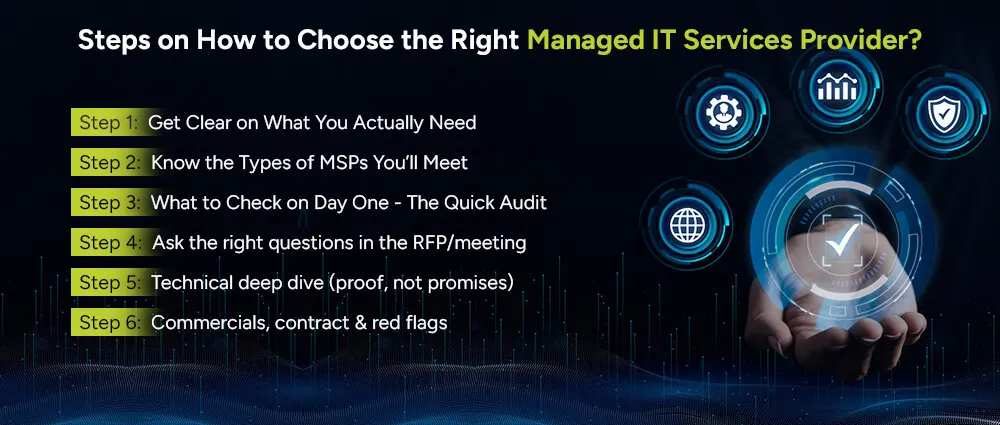
Don’t start by looking at vendors. Start with your own house:
Answering these clarifies whether you need a broad managed IT provider or a specialized MSP (security, cloud-native, DevOps, software development). Use these answers to create short, prioritized requirements you can send to vendors.
Not all managed service providers are the same. In the UAE you’ll commonly find:
Knowing the category helps you compare “apples to apples” when you ask “How To Pick The Right MSP.”
When evaluating vendors, ask for and verify? Tthese items:
Do they operate in the UAE (office or local engineers)? Can they guarantee data residency if needed? Local presence often means faster on-site response and better understanding of UAE regulatory requirements. (Hyperscaler regions and UAE data centers are expanding across Abu Dhabi and Dubai.)
ISO 27001, ISO 9001, SOC 2, and data protection accreditations. For regulated industries, proof of compliance is non-negotiable.
Do they offer 24/7 monitoring, SIEM/SOAR, managed detection and response (MDR), and incident response playbooks? Given the region’s rising cyber incidents, strong security and cybersecurity services are essential.
Response and resolution times, uptime guarantees, penalties for missed SLAs, and clear escalation paths.
Real UAE clients in your industry, whether it’s medical IT or Retail MSP, complete with contactable references. Ask for metrics: uptime achieved, recovery time objectives (RTO), cost savings.
Fixed monthly, per-user, per-device, or hybrid? Make sure you can forecast costs as you scale.
Clear migration plan, timelines, and an exit clause that guarantees data return in standard formats.
Do they have certified cloud architects, security analysts, and local engineers? Ask to see CVs or bios (non-confidential).
Are they partners with Azure/AWS/Google, or with local data centers? Partnership tiers (e.g., Microsoft Gold) often reflect capability.
When you move to conversations, these practical questions separate vendors who talk from vendors who deliver:
If answers are vague or the vendor avoids concrete numbers, treat that as a red flag.
After shortlisting, ask for a proof of capability:
Many MSPs claim “we’ll secure you,” but real value shows in measurable controls and clear outcomes.
Commercials are where partnerships succeed or sour:
Avoid overly long lock-ins without performance milestones. A 3-year contract should have performance reviews and exit options.
Request clear change-control and pricing for out-of-scope work.
Cost is important, but lowest price rarely equals best value. Consider:
TCO over 3 years, not monthly headline price. Factor in downtime risk, security, and vendor responsiveness.
24/7 SOC access, proactive patching, and backups are worth paying for. Global cybersecurity spend is rising (and for good reason): organizations are investing heavily in security services as threats increase.
If two MSPs offer similar services, prioritize the one with better customer reviews, clearer SLAs, and stronger security capabilities.
When you narrow to your top 2–3 candidates, make sure each vendor ticks these boxes:

The UAE’s digital ecosystem is maturing: cloud services, AI spending, and data-center investments are expanding. Expect:
Pick an MSP that invests in these capabilities or partners with specialists.
A mid-sized UAE retailer engaged an MSP after suffering two weekend outages and a near-miss ransomware event. The MSP’s pilot included 24/7 monitoring, patch automation, and a tested backup/restore plan. Within three months the retailer saw:
These are the sorts of measurable wins you should demand when deciding “How To Pick The Right MSP.”
Choosing the best managed IT Provider in the UAE or looking for a remote MSP team doesn’t need to be a mystery. Start with requirements, test with pilots, insist on transparency, and prioritize security and local delivery. The right MSP support becomes a growth enabler: not just a reactive support vendor.
If you want, we at Arpatech can:
Which would you like first? Our Managed IT Service support specialists are always ready to take your call and answer each question kindly.
Evaluate MSPs against a simple framework: People, Process, Platform, Proof, Price.
Run a short pilot (30–90 days) that simulates real operations: this is the single best test.
Use a weighted scoring model:
Create a list of 8–10 must-have criteria (SLA, security services, local presence, certifications, references, pricing transparency, onboarding plan, exit terms).
The vendor with the highest score is the logical pick, but also include an “empathy check”: did they communicate clearly? Are they responsive during the selection process? Cultural fit and trust are often the tiebreakers.
Afnan Ali
Aug 12, 2025
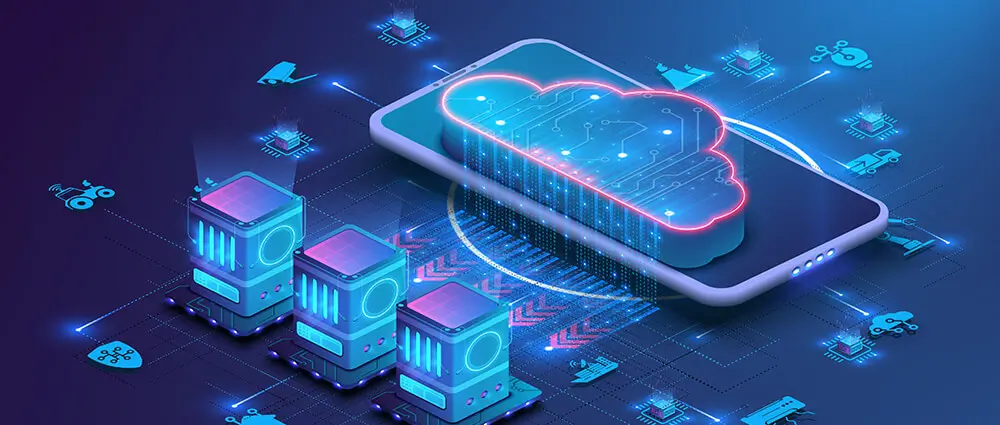
Choosing Between AWS, Azure, and GCP: What’s Best for...
When businesses move to the cloud, the most common question is: Which cloud platform should we choose, AWS, Azure, or Google Cloud (GCP)?
Yes, we are aware that it might be difficult to choose between them. All three giants, market leaders in the filed, Amazon Web Services (AWS), Microsoft Azure, and Google Cloud Platform (GCP). They offer powerful tools, scalability, and global infrastructure. But you’d be happy to know that they are not the same. Each platform has its own merits, strategic models, and ideal use cases. The trick is to determine which one works with your business needs and be the most suitable when it comes to expanding it in the global market.
Today, we would, in a friendly and simple way, present you with an AWS vs Azure vs GCP cloud comparison covering the major tools, services, pricing, and other considerations that may help you arrive at a correct decision for your business in 2025.
Amazon Web Services (AWS) is the oldest and most widely adopted cloud platform in the world. Launched in 2006, it offers over 200 fully featured services, from computing, best cloud backup services and storage to databases, web migration, machine learning, and analytics.
Why do businesses love AWS for their role in cloud-managed services?
If you’re running an enterprise-level app or need deep customization, AWS is often the go-to choice.
Microsoft Azure entered the cloud cryptography scene in 2010 and has grown rapidly, especially among businesses already using Microsoft products like Office 365 or Windows Server.
Why Azure stands out:
Azure is often chosen by companies that want to extend their existing on-premise Microsoft setups to the cloud. It also gives the benefit of efficient cloud migration costs when it comes to Microsoft-heavy environments.
Google Cloud Platform (GCP), launched in 2011, brings Google’s strong infrastructure, powerful data analytics, and AI capabilities to businesses of all sizes.
Why people choose GCP:
Data people love it for startups, AI-powered apps, and developers who get dirty hands with open-source tools.
If you’re looking to compare hybrid vs. multi-cloud, then we’re pleased to tell you that Azure is known for its hybrid capabilities, but GCP takes the cake when it comes to multi-cloud environments.
Here’s a simplified breakdown of the AWS vs. Azure vs. Google Cloud: key differences:
Each platform shines in different areas. So let’s dive deeper to compare AWS and Azure services to Google Cloud in more detail.

Despite their differences, all three offer similar core services:
| Category | AWS | Azure | GCP |
|---|---|---|---|
| Compute | EC2 | Virtual Machines | Compute Engine |
| Serverless | Lambda | Azure Functions | Cloud Functions |
| Storage | S3 | Blob Storage | Cloud Storage |
| Database | RDS, DynamoDB | SQL Database, CosmosDB | Cloud SQL, Bigtable |
| AI/ML | SageMaker | Azure ML | Vertex AI |
| Container Orchestration | EKS | AKS | GKE |
Whether you’re building an e-commerce platform or an AI-powered SaaS app, these services are foundational. However, GCP leads in machine learning, Azure in hybrid cloud, and AWS in breadth of services.
When your app needs to reach users around the world, global coverage matters.
| Platform | Regions | Availability Zones |
|---|---|---|
| AWS | 33+ | 100+ |
| Azure | 60+ | 140+ (some are still launching) |
| GCP | 40+ | 100+ |
Azure leads in total regions, but AWS has the most mature and stable global infrastructure. GCP is catching up quickly and often performs better in latency for data-heavy services like BigQuery.
Let’s look at some high-level benefits and considerations of AWS, Azure, and Google Cloud for different business scenarios.
Consider if you want proven performance at scale, or if you already use tools like Redshift, Lambda, or S3.
Consider Azure if your business runs on Windows, SQL Server, or Active Directory and wants to transition smoothly to the cloud.
Leverage its advatages if you’re building AI/ML apps, or you want modern, open-source tools like Kubernetes baked in from day one.
The honest answer? It depends on your business needs. What requirements do you have determine the type of cloud service you should choose?
Here’s a quick table for your help, if we stand correct on your business requirements, you’ll easily know which platform to choose for your organization:

Some standout tools unique to each provider:
AWS: CloudFormation (infrastructure as code), Lambda (serverless), SageMaker (AI/ML)
Azure: Logic Apps (workflows), Azure Arc (hybrid cloud infrastructure management), Power BI integration
GCP: BigQuery (analytics), Vertex AI (machine learning), Cloud Run (containers)
Understanding these tools can help you answer, what’s the difference between AWS vs. Azure vs. Google Cloud for your particular use case.
Let’s say you’re a:
Startup building an AI tool → GCP’s Vertex AI and BigQuery shine here
Bank needing secure data governance → Azure offers strong compliance and identity tools
Retail business scaling globally → AWS gives unmatched infrastructure and e-commerce-friendly tools
Choosing between AWS, Azure, and Google Cloud isn’t about picking the “best” one, it’s about picking the best one for your business requirements.
Still unsure? Consider doing a pilot project with Arpatech on each platform, and consult with our cloud consultants to align the best cloud choice with your business goals.
Need help comparing options or migrating to the cloud? Let us know, as a cloud consulting company, we’re happy to help you navigate this decision with confidence.
As of 2024, AWS remains the most in-demand cloud platform, largely due to its early entry into the market, serving as a one-stop source for a wide range of services, and its significant market share. Azure follows closely in the corporate market sector. Meanwhile, GCP is quickly becoming the best one for developers and AI-focused startups.
Yes, in many instances. GCP tends to favor pricing on compute resources, flexible per-second billing, and automatic sustained use discounts. But for companies that need a wider ecosystem of services, AWS may offer better value.
It depends on the sector. AWS is the overall leader when it comes to mass-market services, from startups to large-scale applications. Azure dwells mostly on its enterprise clients and those customers using Microsoft products such as Office 365, SQL Server, and Dynamics.
If we’re comparing all three, AWS, GCP and Azure, then we’ll have to admit that AWS is considered as the best overall as it offers the strongest tools like AWS backup, S3 Glacier, and EBS Snapshots. These tools enable centralized backups across various AWS services. With the help of the S3 Glacier tool, AWS has the ability to ensure high durability (11 nines) and supports cross-region and cross-account backups, making it an extensive choice for many corporations.
When we talk about Azure, its safe to say that its the best when working with only Microsoft workloads. Its services like Azure Backup and Recovery Services Vault are integrated with SQL Server, Windows Server, and other Microsoft tools. This way, we can easily say that Azure excels in hybrid environments through Azure Site Recovery, making backup and migration seamless for Microsoft-based systems.
GCP stands out as the best option for Kubernetes and containerized applications. With tools like Backup for GKE and Cloud Storage, it is optimized for modern app architectures.
Ramsha Khan
Aug 7, 2025
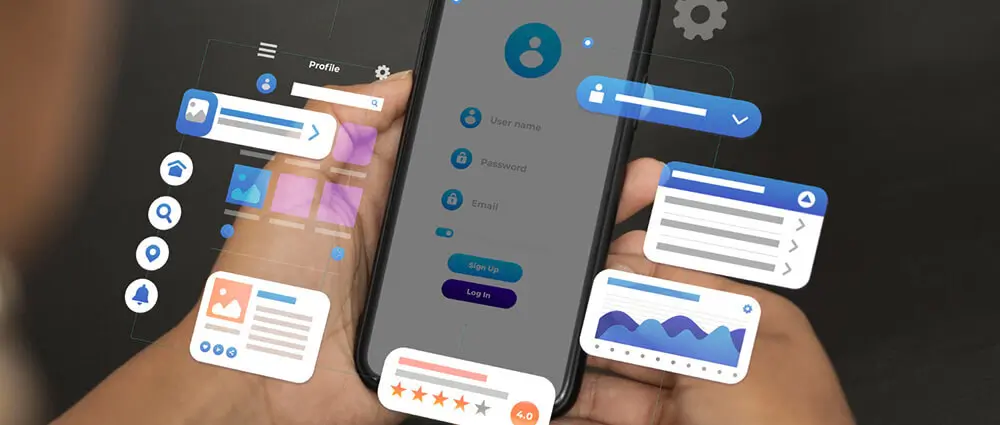
Progressive Web Apps vs Native App: Which Fits Your Tec...
As mobile usage continues to dominate the digital space, developers and businesses face a common dilemma: Progressive Web Apps vs Native Apps, which one should you build?
Each has its own strengths, weaknesses, and use cases. And choosing the right one can significantly impact user experience, performance, and cost. So let’s dive deep into the difference between web apps and native apps, explore their pros and cons, compare native vs progressive web apps, and figure out which one best fits your tech stack.
Native apps are applications designed for a specific platform, such as iOS or Android, and are developed using a platform-specific programming language.
These applications can be downloaded from the App Store or Google Play and can be installed directly to the user’s device.
Progressive Web Apps (PWAs) are web applications that use modern web technologies such as HTML, CSS, and JavaScript to create an experience that is similar to an application through the browser. PWAs encourage all the operations of a native application, such as being added to the home screen, working offline, and using the device features.
And the best part is: they don’t need to be downloaded from an app store, you can access them on a browser, or if you want, they usually have apps as well.
Examples of Progressive Web Apps
Let’s break down the difference between native apps and web apps in simple terms:

Native apps are optimized for the specific platform, offering fast load times, smooth animations, and quick responsiveness.
Native apps can access features like Bluetooth, GPS, camera, push notifications, file storage, and background processes with fewer restrictions.
Native UIs follow platform guidelines, resulting in more consistent and polished interfaces.
Being available in app stores increases visibility and user trust.
You need separate codebases for iOS and Android, which means more time, money, and resources.
Building two apps takes longer than building one, especially with complex features.
You must follow app store guidelines and wait for approval with each update.
Write once, run everywhere. PWAs work on all modern browsers and platforms.
No waiting for app approval or update rollouts, PWAs can be instantly updated and distributed.
PWAs are smaller in size, load quickly, and consume less data, great for users with low bandwidth or storage.
Unlike native apps, PWAs can be indexed by search engines, improving visibility.
Thanks to service workers, users can interact with PWAs even when offline.
PWAs still struggle to access some native functionalities, especially on iOS.
PWAs rely heavily on browser compatibility. While Chrome and Edge support most features, Safari is still catching up.
While this is an advantage in some cases, it also means losing out on discoverability and credibility provided by app stores.
Some users expect to find apps in the store and may hesitate to trust browser-based experiences.
Let’s look at the PWA and native app examples side by side and explore their best use cases.
News sites like Forbes or The Washington Post.
AliExpress saw a 104% increase in conversion rates with their PWA.
Quick to develop, cheaper to maintain.
Twitter Lite reduced data usage by 70%.
Games like PUBG Mobile or Call of Duty rely heavily on performance and hardware-level access.
Security and device authentication features are easier to implement natively.
Uber or DoorDash use location tracking, notifications, and background services.
Device control apps that rely on Bluetooth or NFC.
Whether creating a web or mobile app development in dubai or a web app, one of the most important factors when choosing between native apps vs web apps is the total cost of ownership.
A native app will likely cost 2–3x more than a PWA due to the need for separate Android and iOS development teams. Especially as your team might be more experienced in web development as in PWAs as they are more easy to understand. There are web development guides for native as well, but it can be a little complicated to get the hang of.
Maintenance and updates also require separate resources and timelines.
PWAs are cheaper when it comes to web hosting, updates, and scaling, especially for startups and SMEs.
PWAs are generally easier and faster to build, especially if your team already has web development experience.
Native apps require platform-specific skills and a steeper learning curve.
Frameworks like React Native and Flutter try to bridge the gap by allowing cross-platform native-like development, but they still aren’t as simple as building a PWA.
So… Which One Fits Your Tech Stack?
Ask yourself these questions:
If you’re a startup validating an idea, a PWA makes perfect sense. You can always shift to native later. But if you’re building something that demands device integration or is user-critical, native is worth the investment.
Choosing between a native app vs a progressive web app is not about picking a winner. It’s about selecting the right tools and leveraging AI in web development for the job you’re doing.
Here’s a quick cheat sheet:

Whether you go for a PWA, native app, or even a hybrid approach, the key is to align your tech decision with your business goals, timeline, and user expectations. Collaborate with the web developers at Arpatech to get the best of both worlds, and let’s design your next app.
PWA is Definitely Not Going to Replace Native Apps
At least not fully, nor anytime soon. PWAs are developing really fast, and in some scenarios such as e-commerce and content platforms, they have already surpassed the native apps. But when it comes to features such as Bluetooth, camera controls, AR, or VR, the native takes the crown.
Most companies now build an app in both: a native app that caters to core users and a web app, or PWA, for web traffic.
Progressive web applications act like web applications that use modern browser APIs to bring in functionality comparable to that of the native app. A PWA does not have to be downloaded from an app store, and it can work offline.
A regular (native) app is built particularly to run on iOS or Android, installed via their respective app stores, and built using native platform languages such as Swift or Kotlin..
Depending on what you desire, PWAs are easier and faster to build and demand lesser resources. React Native can develop true native-like applications for both platforms using one codebase.
If performance, animations, or native features are your goal → React Native would be your choice.
If you care more about easy access and rapid deployment at lower costs → PWA probably suits you better.
Ramsha Khan
Aug 5, 2025

How DevOps Improves Compliance in Regulated Industries ...
In industries where regulations are strict and audits are routine, compliance isn’t optional; it’s mission-critical. Whether you’re in healthcare, finance, or any other tightly governed sector, meeting regulatory standards like HIPAA, PCI-DSS, or GDPR can be daunting. Traditionally, compliance meant red tape, delays, and siloed workflows. But DevOps is turning that on its head.
Today, we’ll explore how DevOps improves compliance in regulated industries, introduce best practices, and explain how Arpatech helps organizations navigate the tricky waters of regulatory demands while accelerating innovation.
DevOps seems to be quite an offbeat from other aspects of the world. It flips compliance almost upside-down by speed, iteration, and collaboration. But in reality, they’re truly melded at the hip.
All features of DevOps automation, visibility, and ongoing monitoring are harmonious with the requirements of compliance frameworks for extensive audit trails, regular verification, and swift rebuttal to vulnerabilities.
Here is why:
If anything, DevOps in regulated sectors is about incorporating compliance into the software delivery pipeline; not about flouting rules. So how does that work?
Security is considered from the beginning. Compliance checks happen at every stage of development instead of being bolted on at the end.
At CI/CD pipeline level compliance rules are enforced. In such scenarios, the pipeline could be configured to prevent deployment if any or all compliance checks have not passed.
Like infrastructure, compliance requirements are also written in code, which gives you version control, testing, and repeatability.
To thrive in a regulated environment, it’s not enough to just “do DevOps.” You need remember all the DevOps best practices and here are some DevOps compliance best practices that can help:
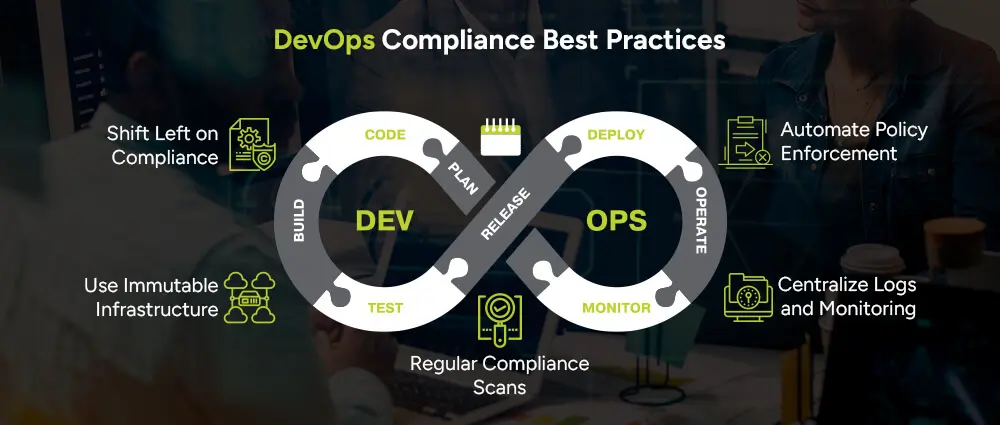
Bring compliance early into the development lifecycle. This avoids costly rework and ensures regulatory standards are considered from day one.
Use tools that automatically enforce security and compliance policies. For instance, code that doesn’t meet encryption standards can be flagged immediately.
Once a server or environment is created, it should never be changed manually. Instead, any changes should be made through code. This provides an auditable trail of changes.
All activity logs should be collected in a central location, where they can be analyzed and audited. This is vital for post-incident reviews and proving compliance.
Schedule scans for vulnerabilities, policy violations, and security misconfigurations. Many tools support this natively within the CI/CD pipeline.
DevSecOps is DevOps with security and compliance built-in. In regulated industries, it’s non-negotiable.
Healthcare organizations need to comply with regulations like HIPAA. This means protecting patient data, ensuring uptime, and keeping audit trails.
Example: A hospital using Arpatech’s DevOps services automated its deployment process while ensuring all PHI (Protected Health Information) handling followed HIPAA protocols.
The financial sector deals with PCI-DSS, SOX, and other frameworks. DevOps helps by:
Case Study: Arpatech helped a digital banking client implement a secure CI/CD pipeline where compliance checks were part of every commit and deployment.
Here are some common regulations and how DevOps addresses them:
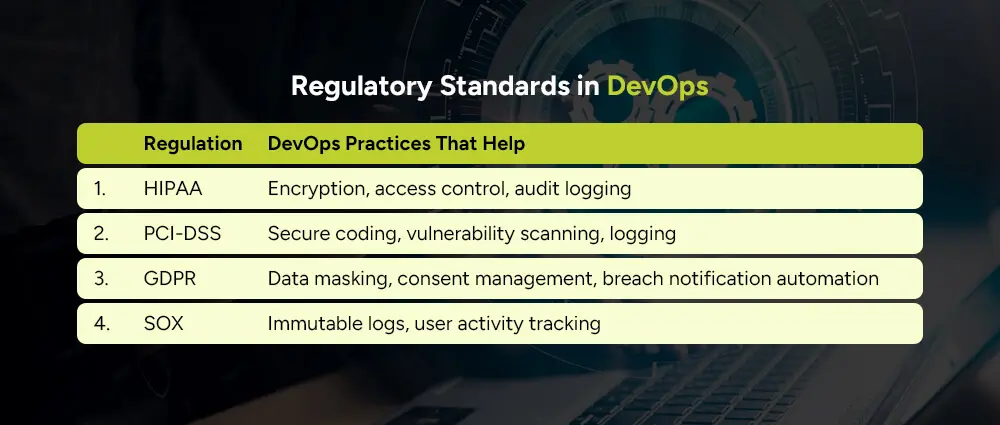
These standards may vary by region and industry, but DevOps’ flexibility allows you to implement controls specific to each requirement.
At Arpatech, we understand that every regulated industry has unique compliance challenges. Our DevOps consulting and implementation services are tailored to align with regulatory frameworks while maintaining speed and agility.
Imagine if a health-tech startup approaches Arpatech to modernize their development workflows while remaining compliant with HIPAA. Here’s how we can help:
How will we be able to solve the issue?
A secure, compliant, and fast-moving release pipeline that passes audits with minimal disruption.
In today’s fast-paced digital landscape, regulated industries don’t have to choose between speed and compliance. With the right DevOps compliance practices in place, your business or start up can have both.
Whether you’re in healthcare, finance, or another regulated sector, integrating DevOps isn’t just a tech upgrade, it’s a compliance game-changer. If you follow all key trends of Devops As a Service, you’ll be able to succeed in no time/
Partner with Arpatech to implement scalable, secure, and regulation-ready DevOps solutions that make compliance a breeze.
DevOps compliance is meant to infuse regulatory, legal, and security standards into the complete DevOps lifecycle. Every software update or infrastructure change should conform to compliance requirements that are relative to their industry.
DevOps fosters improvement in quality, since continuous integration and testing helps to catch problems early. Automated pipelines ensure builds are always consistent and work is collaborative across teams, which prevents misunderstandings, thus producing more stable software, with more security.
Compliance as code turns compliance policies into machine-readable code that can be tested, version-controlled, and enforced automatically. In a DevSecOps model, this ensures compliance is always up-to-date and integrated directly into the development pipeline.
The primary purpose is to ensure that regulatory and security standards are met without slowing down the software delivery process. It enables teams to move fast while staying within the bounds of required laws and frameworks.
Ramsha Khan
Jul 31, 2025

DevOps Best Practices for Remote Engineering Teams in 2...
The way we build, deliver, and maintain software has changed drastically in the last few years. As companies increasingly embrace remote and hybrid work models, remote collaboration in DevOps has become the backbone of distributed engineering teams. By 2025, new advancements, ranging from AI-powered automation to zero-trust security, are reshaping the way DevOps for hybrid and remote teams operates.
Today, we are diving deep into the tools and best practices for remote DevOps, exploring how organizations can maintain collaboration, culture, and efficiency while managing distributed teams.
Talking about how remote engineering teams now have DevOps practices, we need to go back and at least learn a bit about DevOps first.
So, What is DevOps?
DevOps is more than a set of business intelligence tools for Startups; it’s a cultural and technical approach that combines software development (Dev) and IT operations (Ops) to deliver software faster, with higher quality and greater reliability.
DevOps culture accentuates collaboration, automation, continuous integration (CI), continuous delivery (CD), and shared ownership. In 2025, cloud-native DevOps transformed this culture, allowing distributed teams to manage infrastructure, deploy updates, and live up to customer expectations.
The fundamental areas of remote software delivery methods for teams are:

The pandemic fast-tracked the transition to DevOps management from anywhere, which has now become all too common in 2025 for various engineering teams. Remote DevOps integrates cloud-native platforms, CI/CD for distributed teams, and collaboration tools that facilitate asynchronous work.
While managing DevOps teams remotely offers flexibility, global reach, and access to diverse talent, it also comes with a unique set of challenges that organizations need to address carefully:
When people come from different parts of the world or time zones, it becomes a challenge for them to be on the same page. Misunderstandings or delays in sharing information further could pose issues within the development cycle, missed deadlines, and even critical errors. Clear and consistent communication gets more important than ever before.
The very nature of remote working environments tends to increase the number of points of entry for possible cyber threats. Employees are likely to connect to the organization from some unsecured network or personal devices, and such use exposes the system to breaches. That calls for a ‘zero-trust’ security model, where no device or user comes trusted by default, so that data and systems are kept secure.
Remote teams often use a variety of tools for development, communication, testing, and deployment. When these tools fail to connect or share information effectively, it creates silos, isolated systems that don’t communicate with each other. This can slow down workflows and lead to confusion or duplication of work.
The fast response to system failure or outages is an important part of DevOps. However, it’s hard to schedule on-call time for groups across time zones and respond quickly. Fast and smooth remote incident response coordination therefore requires clear protocols and, whenever possible, automation.
Building and sustaining an effective DevOps culture in a remote team is among the most unappreciated challenges. Daily face-to-face interaction keeps the fire of spirit, values, and collaboration going. Leaders need to be intentional in creating bonded people who recognize each other and have some common goals.
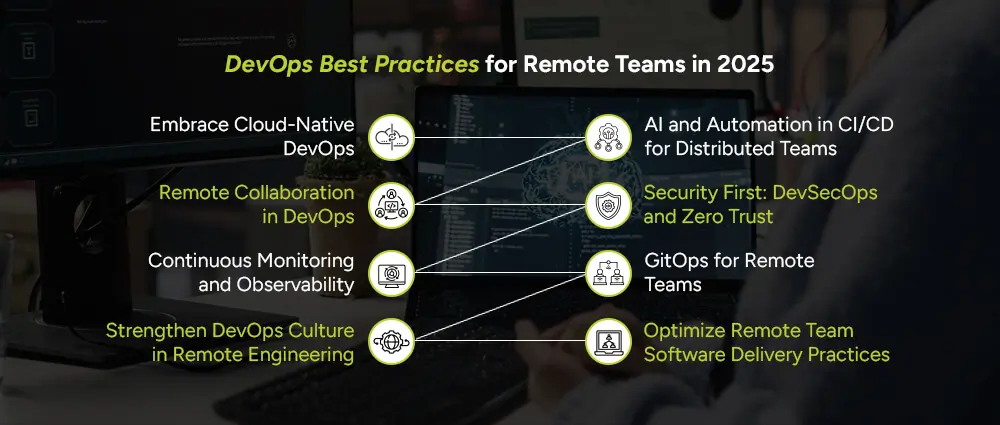
To tackle these challenges, companies must adopt modern DevOps strategies and collaboration tools that keep distributed teams aligned and productive,. These are known as DevOps best practices, which are:
In 2025, cloud-native DevOps will rely on containerization, microservices, and serverless architectures. Kubernetes, AWS EKS, and Azure AKS help teams deploy applications globally, which ensures low latency and high availability for end users.
Significance:
Automation is the foundation of in-house or outsourced DevOps as a service. In 2025, AI has supercharged CI/CD pipelines, enabling predictive analysis, faster deployments, and self-healing systems.
Best practices:
To have remote collaboration on DevOps, a proper way must be employed to communicate as well as track projects. Nowadays, Slack or Microsoft Teams, and Zoom are directly being integrated into CI/CD pipelines or ChatOps for real-time updates.
Best Practices:
Security should not be an afterthought, particularly when considering remote teams. The adoption of DevSecOps services assures that security gets consideration in the early stages of the software development life cycle.
Best practices include:
Being remote means that visibility is important for DevOps. Continuous monitoring and observability tools like Datadog, Prometheus, and Grafana enable teams to track performance and identify issues before they arise.
Best practices include:
GitOps have become the highest standard for the management of infrastructures and deployments. Using Git repositories as the single source of truth affords the remote team to confidently deploy changes.
Best practices:
Cultural alignment is very important for success in the remote setting. In enhancing the DevOps culture in remote engineering, the best practices that we should adapt are:
For remote team software delivery practices, focus on small, frequent releases rather than large, risky deployments.
To ensure that managing DevOps remotely is seamless, teams must adopt the right toolchain.
Must-have categories:
To evaluate how effective the teams have been, the following metrics should be monitored:
The future of remote collaboration in DevOps is being shaped by AI, automation, and decentralized technologies. Expect to see:
Managing DevOps remotely, from this point on, is a permanent phenomenon. Companies are thriving in a distributed work environment by implementing DevOps best practices for remote teams; relying on key trends of remote DevOps as a service collaboration tools; and building a culture of transparency and automation.
Remote teams’ software building and delivery activities are being transformed by cloud-native DevOps 2025, AI-enabled CI/CD pipelines, and GitOps. If organizations truly make investments in remote software delivery practices and the right toolchain, they will not just keep pace with these advancements, but, instead, will lead the path into the future of digital innovation.
Are you ready to future-proof your engineering teams, then? Implement these immediately with Arpatech for remote DevOps services to deliver software in 2025-Faster, Safer, and Smarter.
DevOps, in its core aspect, is the simultaneous existence of four key principles:
An introduction to the 7 principles of DevOps:
Ramsha Khan
Jul 29, 2025